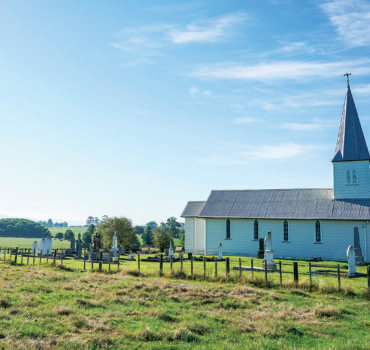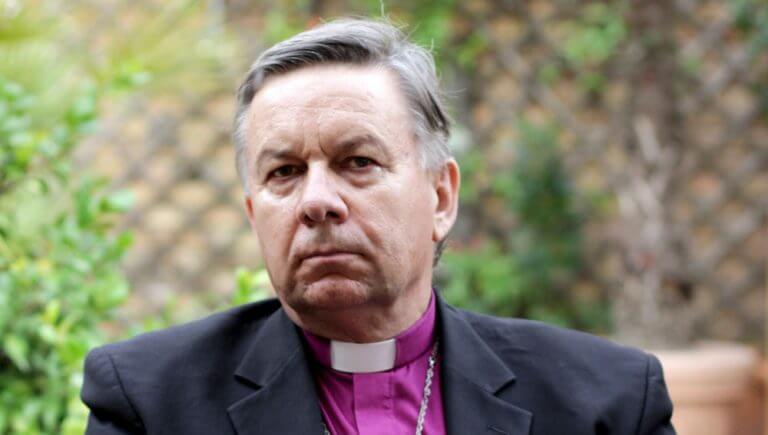
St Paul’s Church at Rangiaowhia. Photo: Benjamin Wilson.
 Plans to resurrect Rangiaowhia as a world heritage site – and home to iwi again, have been unveiled.
Plans to resurrect Rangiaowhia as a world heritage site – and home to iwi again, have been unveiled.
Labour MP Angela Roberts travelled north from her Taranaki base to meet iwi representatives at Kihikihi last week – and hear what Ngati Apakura and Ngāti Hinetu have planned for their traditional home 4kms east of Te Awamutu.
The details were provided in a verbal briefing by Anglican archbishop Sir David Moxon who spoke of the historic links between iwi and the church and the thriving horticulture and agricultural business Māori had developed more than 150 years ago.
“The orchards were feeding Auckland, fruit and vegetables were being traded with Sydney, and trading was starting with California.”
Between 1838 and 1864 98 per cent of workers there were Māori, it was a success story, and in Moxon’s words “it was going places”. The orchards and vegetables covered about 400ha and the village was described as being 3km long with a population of 700.
But on February 21, 1864, that came to an end as colonial solders raided the community.
The dawn attack has been described as one of the worst war crimes perpetrated by the Crown against Māori.
Harris says Māori were taking part in a service in a whare karakia – a house of prayer – when the building came under fire. A kaumatua came out waiving a white sheet – and was shot. He says those left inside were then too frightened to come out – and died when the punga and canvas whare was set alight.
What was clearly a strategy to destroy the Rangiaowhia economy was a success. Ngāti Apakura and Ngāti Hinetu were left homeless and provided with shelter by neighbouring iwi – and have never gone back to live at Rangiaowhia.
Moxon spoke of the grief and huge burden felt by the church which had close relationships with the community before the attack – and how in the last year it had played a part in securing 4.7ha of land at Rangiaowhia back, with a view to presenting it to the iwi.
The land had been auctioned, and the church’s efforts to buy it fell short. But following discussions, the successful party agreed to sell the land to the church.
“I couldn’t believe it – I was deeply moved,” Moxon said.
He also revealed the involvement of ministers Nanaia Mahuta, Kelvin Davis and Andrew Little in assisting with steps to enable the iwi to return.
Some of that information has been reported previously in The News – but the extent of the planning for what Moxon called a resurrection, was fleshed out at last week’s meeting.
There are plans for the iwi to return to Rangiaowhia, plant new orchards and set up kaumatua housing.
When that happens, one constant from the 1800s will be there – St Paul’s Church, which was built between 1852–1856.
But the handover of land has yet to be done – and Moxon was keen to hear from Roberts what steps could be taken in anticipation of that happening, given there had been strong support from government ministers already.
The MP saw a number of potential allies who would probably want to be involved in the project and provided advice.
She said the development would be a good example of how partnerships would like with co-governance – “every example will be different”.
- At the time of the controversial raid at Rangiaowhia 150 years ago, this illustration was presented under the headline “The defenders of New Zealand”.
- Jennifer Burton captures the historic church at Rangiaowhia.











